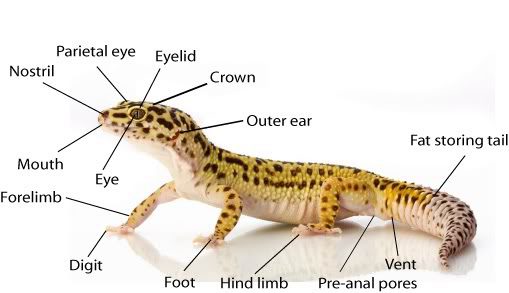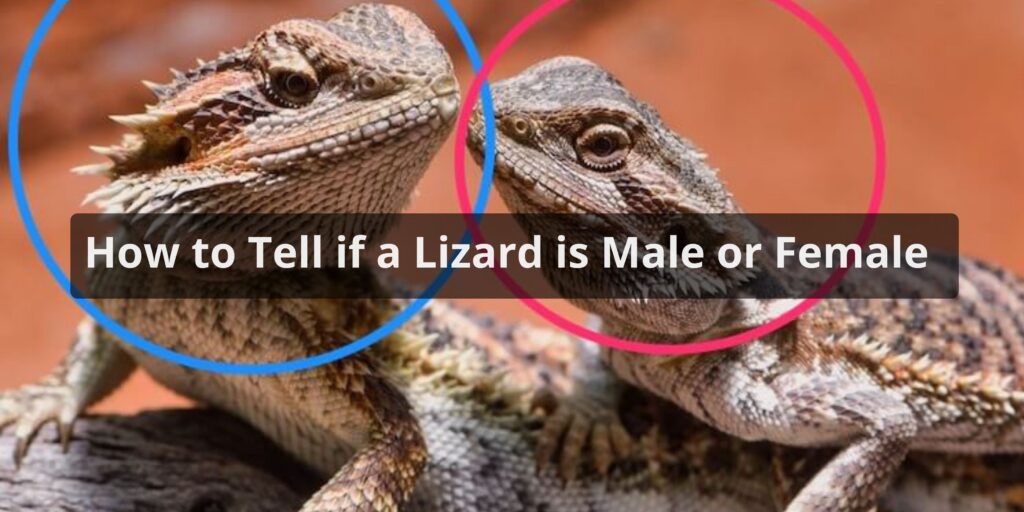Determining the sex of a lizard can be important for breeding purposes or just to better understand their behavior. While some lizard species have distinctive sexual dimorphism that makes sexing easy, others require a more hands-on approach to ascertain gender. Here is a guide on how to tell if a lizard is male or female:
Look for Physical Differences

Many lizard species exhibit sexual dimorphism, meaning there are physical differences between males and females of the same species. Some examples include:
- Size: In some species like iguanas, the males are noticeably larger than females.
- Color: Males can be more brightly colored or patterned than females in species such as anoles and bearded dragons. They may also develop more vibrant colors during breeding season.
- Head size and shape: Males often have larger, wider heads. Females usually have smaller, narrower heads.
- Hemipenal bulges: Males have two hemipenes located below the vent which are only visible when everted. These may cause slight bulges on either side of the tail base.
- Preanal pores: Special scales that secrete pheromones. Present in mature males of certain families like geckos and skinks.
- Spurs: Small claw-like protrusions on the inside of the thighs. Found only in mature males of some species like collared lizards and girdled lizards.
Pay close attention to these cues, but remember that sexual dimorphism varies significantly between species. Some males and females look nearly identical. When in doubt, probe the vent or use another method.
Probe the Vent
One definitive way to determine lizard gender is to gently probe or “pop” the lizard’s vent, looking for hemipenal bulges. This takes some practice and should never harm the animal. Steps include:
- Hold the lizard securely but gently, preferably in a cloth or wet hands to avoid damaging scales. Limit movement without causing stress.
- Locate the vent, indicated by a slit-like opening under the tail base.
- Use a lubricated probe, such as a rounded toothpick. Gently insert about 1 cm into the vent opening and curve slightly upwards.
- Males have two hemipenes which will Stop the probe in one or both directions, depending on whether one or both are inverted. Females have a single cloacal opening that allows deeper probing.
- Repeat a couple times, angling the probe in different directions to confirm.
- Apply antibiotic ointment after to avoid infection. Allow the lizard to rest afterwards.
Venting is usually quick and minimally stressful when done properly. It should not harm the lizard. This is the most reliable method for accurately sexing adult lizards.
Look for Eggs
The presence of eggs is a clear indicator of a female lizard. Though not all lizards lay eggs. Steps include:
- Carefully pick up and cradle the lizard, supporting the abdomen. Run fingers gently along the belly between hind legs.
- If eggs are present, you will feel two rows of small lumps through the skin. The number depends on species and clutch size.
- Females that appear gravid (carrying eggs) usually have an enlarged abdomen.
- Gently palpate the area to determine if the lumps are indeed shelled eggs. Do not attempt to squeeze them.
- Some species may not lay eggs every year, so lack of palpable eggs doesn’t necessarily indicate a male. Use other sexing methods too.
Checking for shelled eggs can reliably identify a reproductively mature female but males and non-gravid females will require other sexing techniques. It avoids invasive probing though.
Observe Behavioral Cues
Though not foolproof, observing lizard behaviors can provide clues to gender in some species:
- Territorial displays: Males often engage in head bobbing, push-ups, or extension of the dewlap (throat fan) to defend their territory, attract mates, or intimidate other males.
- Combat: Males will spar with each other over territory using tactics like biting, chasing, and wrestling.
- Mounting: A male lizard may try to mount and grasp females with his front legs as an early breeding behavior. Receptive females allow this while unreceptive ones flee or become aggressive.
- Nesting: Gravid female lizards become preoccupied with digging nests and laying eggs at breeding time. Males show little interest in this.
- Parental care: While variable across species, females often provide more parental care of eggs and young.
Try to observe the animal for awhile before drawing conclusions about gender from behavior alone. Consider pairing it with other sexing techniques like probing for confirmation.
Consider Age and Species
Correctly sexing lizards relies heavily on maturity and species-specific traits. Consider:
- Juveniles often lack distinct sexual characteristics. Attempts at probing, egg palpation, or sexing by behavior tends to be unreliable in young, immature lizards. Growth and age are needed.
- Non-native species may not exhibit the sexual traits you expect. Research the particular species first to understand what cues to look for. An understanding of taxonomy helps.
- Seasonal variations occur in mating behaviors, colors, and physical features. The same lizard may appear male at one time of year and female at another. Account for this.
- Individual variation means lizards of the same age/species/sex won’t always look or act the same. Use multiple techniques and allow room for exceptions.
In short, there are no universal rules. Factor in the nuances of age, species, season, and individuality when attempting to sex lizards. With experience, the necessary cues will become more recognizable.
Seek Expert Assistance
For difficult cases or when advanced methods are needed, don’t hesitate to contact:
- Reptile veterinarians can sex lizards through physical examination, palpation, probing, or ultrasound and offer advice on safe handling techniques.
- Reptile breeders and researchers may have species-specific knowledge and skills for sex determination, especially for less common species.
- Zoos, museums, and universities may employ qualified herpetologists who can reliably sex lizards in their collection.
Getting help from a reliable source prevents injury to the animal and ensures accuracy. This is recommended for rare, delicate, or dangerous species. Vets can also diagnose other conditions that may complicate sexing.
Conclusion
Determining the sex of a lizard requires a combination of visual inspection, manual palpation, vent probing, and behavioral observation. While simple for some species, others provide a challenge even to experts. Key points are understanding sexual dimorphism for the species, proper handling techniques, and accounting for variables like age, species, and seasonality. When in doubt, seek assistance from qualified individuals to avoid harm and errors. With practice and care, accurate sexing of lizards is certainly possible for the dedicated hobbyist or researcher. The reproductive health and wellbeing of these fascinating reptiles depends on it.
FAQs About How to Tell if a Lizard is Male or Female
Are there visible differences between male and female lizards?
Yes, in many species, there are visible differences. Males may have larger heads, prominent throat pouches (dewlaps), or more vibrant coloration. Females might appear smaller with less flashy markings.
Can the coloration of a lizard indicate its gender?
Yes, coloration can be a gender indicator. Male lizards might exhibit brighter and more intense colors during mating seasons to attract females. However, this method isn’t foolproof as coloration can also be influenced by other factors.
What are hemipenal bulges, and how do they relate to gender?
Hemipenal bulges are noticeable swellings on the base of a lizard’s tail, usually more prominent in males. These bulges house the hemipenes, male reproductive organs, and their presence can indicate the lizard is male.
Do male and female lizards have differences in body size?
Yes, in some species, males tend to be larger than females, while in others, females are the larger sex. However, size differences aren’t universal and can vary based on species and individual variation.
How do you differentiate between male and female lizards in species without obvious external differences?
In such cases, internal examination might be necessary to determine gender. Techniques like probing or using a specialized endoscope can provide insights by revealing internal reproductive structures.
Can the behavior of a lizard provide clues to its gender?
Yes, behaviors such as territorial displays, courtship rituals, or vocalizations can offer hints about gender. Males often engage in these behaviors to attract females or establish dominance.
Are there any specialized tools or techniques for gender determination in lizards?
Yes, techniques like cloacal probing, which involves gently inserting a probe into the cloaca to feel for reproductive structures, can determine gender. However, these methods require expertise to avoid harming the lizard.
How can you identify gravid (pregnant) females in lizards?
Gravid females might appear distended in the abdomen due to the presence of developing eggs. In some species, the eggs can be felt when gently palpated. Ultrasonography can also be used for non-invasive determination.



